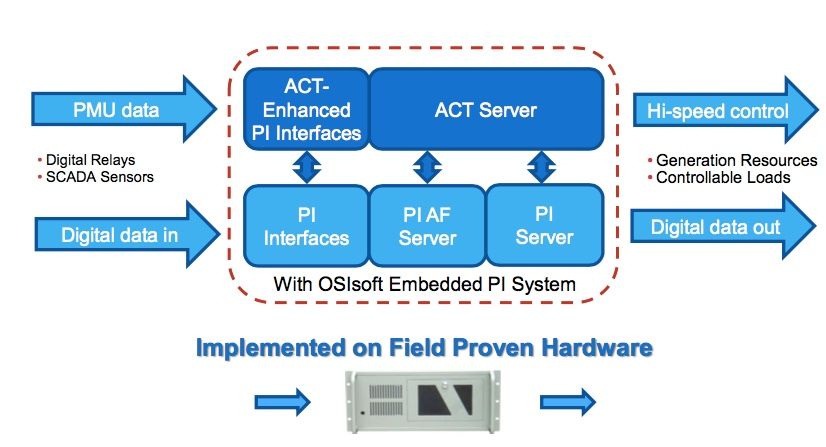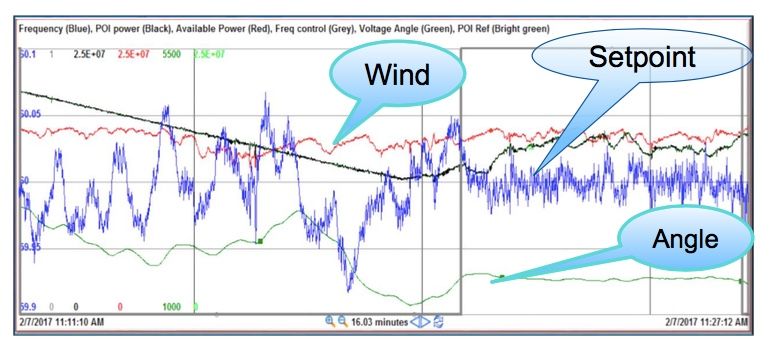Pxise Energy Solutions, the Sempra Energy spinout with software that can tap lots of wind and solar inverters, batteries, and other distributed energy resources to help balance the grid, has landed an undisclosed equity investment from Japanese trading house Mitsui.
It’s the first outside investment for the company, which plans to use the money to expand its software in commercial applications ranging from large-scale wind and solar farms to small-scale microgrids — and, potentially, distributed energy resource (DER) management for applications like distribution grids that lie between those two extremes.
Patrick Lee, president of Pxise (pronounced like “spice” without the “s”), declined to say how much Mitsui has invested, but noted that it constitutes a 20 percent equity stake in the company. Mistui will also market the company’s technology, which Makoto Serino, general manager of Mitsui’s DT business development division, said in a statement will “accelerate the digital transformation in the energy and power industry where Mitsui has many assets and access to partners.”
Mitsui, which has a number of renewable energy, distributed energy storage and internet-of-things investments, has also invested in OSIsoft, the big utility data historian software vendor that co-developed Pxise’s software. OSIsoft introduced Pxise to Mitsui last year, which “saw it as one of the missing pieces to complete their portfolio,” Lee said.
Pxise was launched last year to commercialize software for the grid based on the concept of multivariable feedback control, also known as two-by-two decoupling control. This technology is in use in aircraft autopilot systems, oil refineries and other systems that require the coordination of many different inputs in complex feedback loops.
The fundamental idea, Lee said, is to design a grid-balancing system that’s “designed as a system, as opposed to designed for specific devices.” In field tests, Pxise has shown that its technology can control multiple devices from different vendors, all through a common software platform running on a single hardened server that costs less than $5,000, he said. “To harmonize a group of DERs of any size or shape — that’s what we’ve built.”
To get the real-time data it needs, Pxise taps the capabilities of phasor measurement units, or PMUs, also known as synchrophasors. These devices measure the magnitude and angle of electrical sine waves at the speed of the grid — 60 cycles per second in North America, to be precise — and synchronize that data across entire regions and grid networks using global positioning system radio clocks.
That resolution of data allows Pxise’s software to control for multiple grid disturbances simultaneously, from relatively simple energy supply-demand imbalances to more complicated reactive power and phase angle-related disruptions. While most PMUs in use today are purpose-built for transmission grid monitoring, many devices now on the grid carry the same sensing capabilities, like relays built by well-known grid vendor Schweitzer Engineering Laboratory, and Pxise is working with its partners to “light up this dark data” within them, Lee said.
With this high-resolution data, Pxise’s software can automatically control multiple devices, from solar and battery inverters to grid capacitors and voltage regulators, to balance out these disturbances in real time. Of course, the platform includes a human interface for grid or DER fleet operators to make their own commands — but the most challenging balancing tasks require speeds much faster than humans are capable of, Lee noted.

The details of the technology are contained in Pxise’s intellectual property portfolio, which includes eight patents granted to date and four more patents pending. But in a series of field tests over the past several years, said Lee, “the hardest challenge, in terms of the ability to control devices at high speed and with precision, are proven. What we need to demonstrate is not so much a technical challenge as an implementation challenge.”
Pxise’s first field test was at Sempra Renewables’ 22-megawatt Auwahi Wind farm on the island of Maui, which includes an 11-megawatt battery system. The tests showed that the software was capable of balancing power output between the wind farm and battery in reaction to “multiple disturbances to the grid, including rooftop solar, wind, and system demand changes,” while simultaneously actively keeping grid frequency within a "tight band."
That control was all accomplished via servers in San Diego managing controls in Hawaii, indicating that it’s capable of managing real-time orchestration remotely, Lee said. But it also showed that Pxise’s software was capable of scaling down to serve lower-cost applications, including microgrid operations.

“Right away, we transitioned into more commercial deployment,” he said. Pxise’s next test, running a solar-battery microgrid at a Sonoma County, California winery, used the “same software that we’ve configured for the wind farm,” he said, although at a much smaller scale. Parent company Sempra is also testing the software at its San Diego headquarters.
More recently, Pxise has expanded into both large-scale renewables and microgrids via new projects in California. On the utility-scale side, Pxise’s software is now operating at the Great Valley solar complex near Fresno, California, a combined 200 megawatts of solar PV built from four different PPAs, that Sempra Renewables purchased last year. There, it’s optimizing capacitors, inverters and other existing equipment to better manage the challenges of balancing the single interconnection point that connects all four solar installations to the state’s power grid, with far more visibility and greater reaction speed than supported by the existing SCADA system, explained Lee.
In May, Pxise won a subcontracting role in two California Energy Commission grant-funded microgrid projects, one at Santa Rosa Junior College in Sonoma County and the other for the Chemehuevi Tribe in southeastern California.
Pxise is now setting its sights on the middle ground between utility-scale renewables and microgrids, as a distributed energy resource management system provider for utility distribution grids, Lee said. Its first target is Australia, where Pxise is now on the short list of vendors vying for a 50,000-DER virtual power plant project being proposed by utility Horizon Power.
Today, software that goes by the DERMS title consists primarily of systems optimized to manage fleets of DERs for bidding into wholesale markets, or utility-centric systems optimized to meet specific distribution grid purposes. According to GTM Research, a true “enterprise DERMS” platform, capable of real-time monitoring, control and orchestration of thousands of DERs across a utility’s system, does not yet exist.
Lee would like to see Pxise take on that role as a single platform, which could help utilities avoid the potentially project-killing complexities involved with tying multiple existing DER and grid control systems in a way that can support real-time operations. “Architecting a system that’s hierarchical and multi-level control — we already do that,” he said. “Now it’s just piecing it together.”




